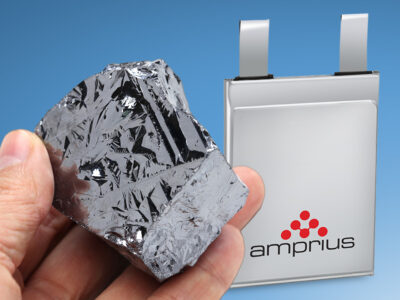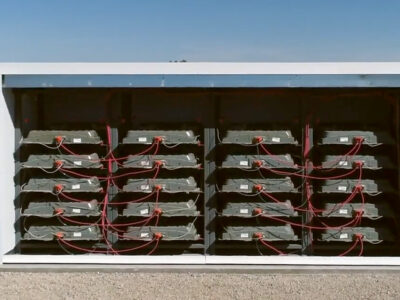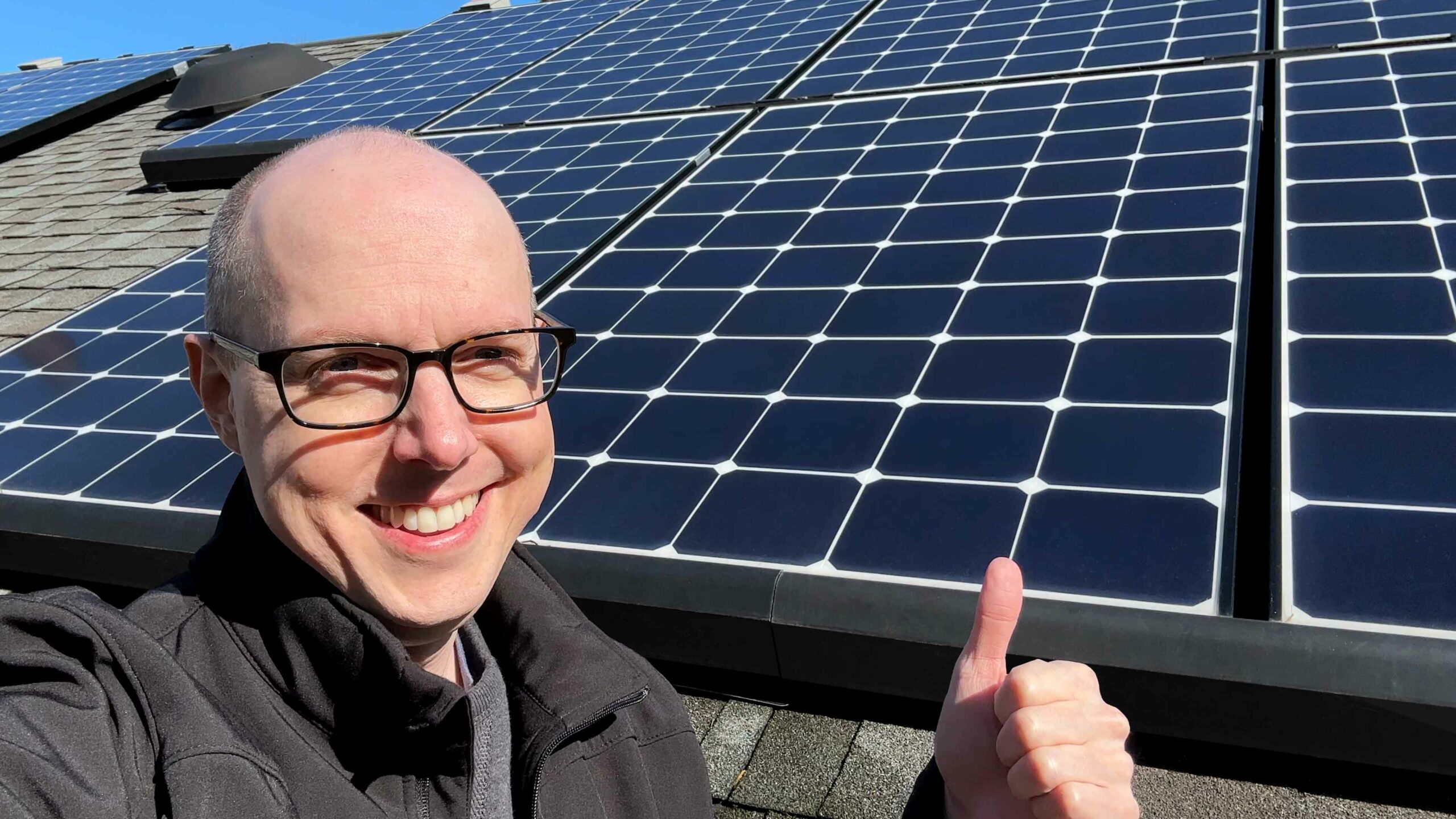Hydrogen and fuel cells are often held up as one of the big solutions to getting off fossil fuels, but what if I told you that 95% of hydrogen is currently produced from fossil fuels? 1
This is when green hydrogen typically comes up. But what is it and how does it stack up against other renewable options? And what if I told you there’s a solar cell that can make hydrogen directly from the air? Let’s explore green hydrogen’s booming potential. Yeah, I made an explosion joke.
When did hydrogen go green?
So when did hydrogen go green? On paper, the British scientist J.B.S. Haldane was the first one to raise the concept of renewable hydrogen in 1923.2 It’s not until 1990 that the Haldane prediction came true. In that year, hydrogen was produced from solar for the first time in a German pilot plant.3
But what is green hydrogen … well, there are three color coded categories of hydrogen production: green, gray, and blue. As of today, the definition of green hydrogen doesn’t seem to be the same across the globe. Based on the European CertifHy project, hydrogen is awarded a …green card…if it’s generated by renewable energy and the process’ carbon emissions are 60% below those released by gray hydrogen. Gray hydrogen is made from fossil fuels … obviously. Specifically by steam reforming of natural gas. And gray hydrogen turns into blue when carbon capture and utilisation/storage (CCS/CCU) are used in the process. Basically you’re just sucking up as much of the carbon output as you can. I’ve got a video on CCS in another video if you’re interested, but that’s the full hydrogen rainbow.4
But how do we produce green hydrogen from renewable sources?
The most ready-to-go technologies are: 1) a renewables-powered electrolyzer (a.k.a. power-to-gas (P2G) technology and 2) steam reforming of biogas with or without CCS/CCU. For the purposes on focusing on the greenest hydrogen, I’m only going to look at the first one.
So first, what’s an electrolyzer? Put simply, it’s a device that breaks down water into oxygen and hydrogen. This happens in a cell with a membrane separating a cathode (positive pole) and an anode (negative pole). When you apply a current to the cell you trigger electrolysis, in other words water splitting.5
Now it sounds like a green process, but there’s a major issue. If you’re not using renewable-generated electricity to power the electrolyzer, then you’re still having a high environmental impact.6 Although industrial renewable-powered electrolyzers achieve efficiencies of up to 85%7, only 4% of the global hydrogen is produced this way.8
Green hydrogen applications
The high-purity hydrogen produced by an electrolyzer is ideal to be fed to a fuel cell.9 During the last decade hydrogen fuel cells development has slowed down, but it’s still moving along and hasn’t stopped. Japanese companies have been all in on fuel cells for use in vehicles (FCEVs).10 Sometimes to a fault, but the cost is dropping as the technology edges toward mass production. Even if FCEVs lowering costs drop at the expected rate, it’s not expected to match those of battery electric vehicles (BEVs) and fossil-fuelled cars until 2030.11
Even though passenger car variants of FCEVs may be lagging behind battery electric, other transport types might benefit from them. Hydrogen fuel cells may make more sense for heavier vehicles traveling over longer distances such as buses, trucks and trains. For example, in 2016 in the US there were 12,000 hydrogen fuel cell powered forklift trucks.12
Other than road and rail transport, green hydrogen appeals to the shipping industry as well.13 Many maritime companies are considering this option, but it’s not clear sailing since hydrogen has a low volumetric energy density compared to other fuels, which makes it tricky to store on board.14 The workaround for that would be to use high pressure systems, liquefied hydrogen or solid material to trap the gas into. All of this is still under development.
So, is green hydrogen getting off the ground? In some cases it is … literally. Airbus is counting on green hydrogen to propel its zero-emission aircrafts by 2030,15 but the aviation application isn’t free of challenges either. We’re still far from having adequate infrastructures to provide large amounts of hydrogen at airports around the world.
There seems to be a lot going on in the transportation sector, but what else can we do with green hydrogen? We can’t electrify everything and green hydrogen can work as an…extension cord…for renewable energy. Plus, clean hydrogen can also be stored, so it can be used to compensate for renewable energy intermittency. This makes a lot of sense as it gives us flexibility and a more resilient grid when used in combination with renewable energy. That’s why this clean fuel can be strategic as we clean up different sectors like heating and other fossil fuel-dependent applications (e.g. like steel production).16 For instance, as of 2018, hydrogen fuel cells heated up 225,000 homes around the world.17
Who’s hopping on the green hydrogen bandwagon?
So, which countries are in pole position in the green hydrogen race? One of them is my favorite renewable energy go to: Australia.
Hydrogen Renewables Australia is developing a 5-gigawatt project to produce green hydrogen for export to Asian countries. The mega electrolyzer will be powered by a combo of solar and wind and use desalinated water taken from the ocean.18
The UK is planning to use its offshore wind power for a 5GW hydrogen production capacity by 2030.19
Green hydrogen can inspire a vision for futuristic cities. Just like the Saudi Arabian Neom, a $500bn urban project, whose energy demand will come from renewable hydrogen.20 To make the dream come true, the US company Air Products & Chemicals has been building what they claim to be the world’s largest green hydrogen plant. 4 GW worth of solar and wind installations will generate the clean fuel.
And then there’s Wuhan … it’s not just famous … or infamous … for what we all know it for. China is planning to shape Wuhan as a hydrogen city, which will have up to 100 fueling stations by 2025.21
But solar and wind aren’t the only options to produce green hydrogen. Despite an explosion at a hydrogen filling station22, Nel’s fuel cell EVs production is still going at … full blast … the Norwegian company has been generating their clean hydrogen from hydropower since 1940.23
This year Scotland will launch the world’s first continuous green hydrogen plant powered by tides24. The missing link is vanadium flow batteries, which will store energy surplus generated by tidal turbines at high tide and release it at low tide. To add to that, geothermal energy will also contribute to green hydrogen generation in New Zealand at some point this year.25
That’s not the end of it. Scientists around the world have been brewing up clean hydrogen using crazy innovations.
What if you could produce hydrogen using the solar panel on your roof? A Belgian research team did it. Well, they didn’t actually use the one on your roof, but developed a solar cell prototype that produced 250 liters of hydrogen per day out of sunlight and moisture. Yes, just the moisture from the air. To add to that, their latest panel efficiency increased 150 times compared to the one created 10 years earlier. Now, this is still lab talk, but if they’re able to scale up the technology, we won’t need expensive electrolysis mega-plants.26
What about producing hydrogen while reducing global warming at the same time? Sounds crazy, right? Well, South Korean researchers developed a catalyst made of cheap materials like magnesium to convert the two worst greenhouse gases, CO2 and CH4, into hydrogen. Their climate-friendly process is called dry reforming.27
Another cheap yet efficient solution is coming from Japan. The University of Tokyo made hydrogen out of light, organic waste and a catalyst made of rust. Yes, rust. By-passing the energy-demanding, water-thirsty electrolysis, their technology produced 25 times more hydrogen than the conventional techniques.28
Slowing down the Hype-gen
While there is a buzz around green hydrogen, it’s money that makes the world go around, right? So, is it worth it? Let’s look at the true cost of green hydrogen and see how competitive it is compared to other fuels.
Based on the International Renewable Energy Agency (IRENA), as of today green hydrogen has a comparable cost (around $2.50/kg) to some of the fossil-fuel alternatives only when produced with the cheapest renewable technology.29 Good news is the levelized cost of energy (LCOE) of solar and wind has fallen dramatically over the last decade and is expected to continue to fall over the next 30 years from additional technology improvements. The same applies to electrolyzers. This favorable combo is expected to make green hydrogen cheaper than all forms of hydrogen from fossil fuels by 2050.3031 Or even by 2025 according to Nel. The Norwegian electrolyzer manufacturer claimed they could cut the cost of their devices by 75%. This will bring down the levelized cost of hydrogen (LCOH) to $1.50/kg. The same as grey hydrogen.32 So if they pull this off, they’ll be price parity in just a few years.
The Hydrogen Council also predicted green hydrogen to become more competitive than grey hydrogen as early as 2030 for long-range large vehicles (trains, buses, forklifts), boilers and industrial heating. But this won’t come for free. We’ll need to invest $70B to up-scale hydrogen technologies.33 It’s a big investment.
Throwing money at hydrogen might not be a good idea for some. Green hydrogen skeptics argue we might struggle to produce enough renewable energy to meet its global demand. So what do we do? We could mix and match the colors. Remember blue hydrogen?34 It might be able to act as a bridge as we ramp up green production. The point is that the much-hyped hydrogen economy might be slower and less green than many think.35 The hydrogen hype might work as a diversion driving money away from renewables and battery technologies … shifting it towards oil companies.36 Regardless of how you may feel about that, green hydrogen might be an essential piece of the renewable energy puzzle over the next few decades.
- “IRENA, Hydrogen: A renewable energy perspective – International ….” ↩︎
- “J.B.S. Haldane Presents an Early Vision of Transhumanism, and the ….” ↩︎
- “THE HISTORY OF HYDROGEN | AltEnergyMag.”. Accessed 13 Mar. 2021. ↩︎
- “CertifHy 1.” ↩︎
- “Cummins moves the future of Hydrogen forward with new coalition ….” 12 Mar. 2021 ↩︎
- “Environmental Assessment of Electrolyzers for Hydrogen Gas … – DiVA.” ↩︎
- “Industrial electrolyzer for large-scale on-site renewable … – CORDIS.” 12 Oct. 2018 ↩︎
- “Renewable Power-to-Hydrogen – International Renewable Energy ….” ↩︎
- “Introduction to Electrolyzers – Fuel Cell Store.” 7 Nov. 2017 ↩︎
- “Toyota moves to expand mass-production of fuel cell stacks and ….” 24 May. 2018 ↩︎
- “The role of hydrogen and fuel cells in the global … – RSC Publishing.” ↩︎
- “Early Markets: Fuel Cells for Material Handling Equipment.” ↩︎
- “First wave of ships explore green hydrogen as route to net … – Reuters.” 30 Oct. 2020 ↩︎
- “Challenges in the use of hydrogen for maritime … – RSC Publishing.” ↩︎
- “Hydrogen in aviation: how close is it? – Innovation – Airbus.” 8 Oct. 2020 ↩︎
- “IRENA, Hydrogen: A renewable energy perspective – International ….” ↩︎
- “The role of hydrogen and fuel cells in the global … – RSC Publishing.” ↩︎
- “Hydrogen Renewables Australia: Home.” ↩︎
- “UK targets 5GW hydrogen production by 2030 – Argus Media.” 18 Nov. 2020 ↩︎
- “The new fuel to come from Saudi Arabia – BBC Future.” 13 Nov. 2020 ↩︎
- “”Hydrogen city” to be built in central China – Xinhua | English.news.cn.” ↩︎
- “A hydrogen fueling station fire in Norway has left fuel-cell … – Quartz.” 12 Jun. 2019 ↩︎
- “About | Nel Hydrogen.” ↩︎
- “Press release: Flow batteries to combine with tidal power to produce ….” 9 Nov. 2020 ↩︎
- “Hydrogen production project kicked of at Mokai geothermal plant ….” 13 Sept. 2020 ↩︎
- “Solar Panel Splits Water to Produce Hydrogen – IEEE Spectrum.” 13 Mar. 2019 ↩︎
- “KAIST catalyst ‘major step to carbon circular economy’ – The Engineer.” 17 Feb. 2020 ↩︎
- “Rust and light combine for a 25x boost in hydrogen … – New Atlas.” 27 Feb. 2020 ↩︎
- “IRENA, Hydrogen: A renewable energy perspective – International ….” ↩︎
- “GREEN HYDROGEN.” ↩︎
- “BNEF’s New Energy Outlook 2018 | Center for Strategic and ….” 20 Jun. 2018 ↩︎
- “Nel to slash cost of electrolyzers by 75%, with green hydrogen at ….” 21 Jan. 2021 ↩︎
- “Path to hydrogen competitiveness A cost … – Hydrogen Council.” 20 Jan. 2020 ↩︎
- “A wake-up call on green hydrogen: the amount of wind and solar ….” 19 Mar. 2020 ↩︎
- “The myth of the green hydrogen revolution – Ambienta.” ↩︎
- “The 3 Big Problems With Hydrogen Hype – CleanTechnica.” 14 Mar. 2021 ↩︎















Comments